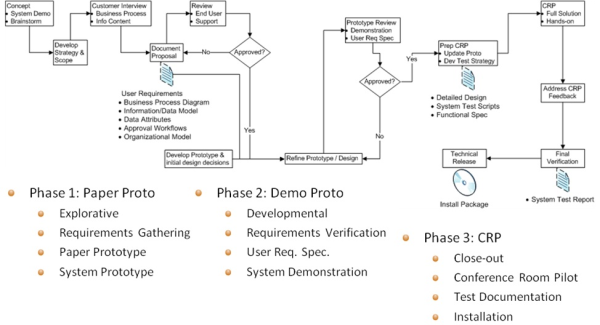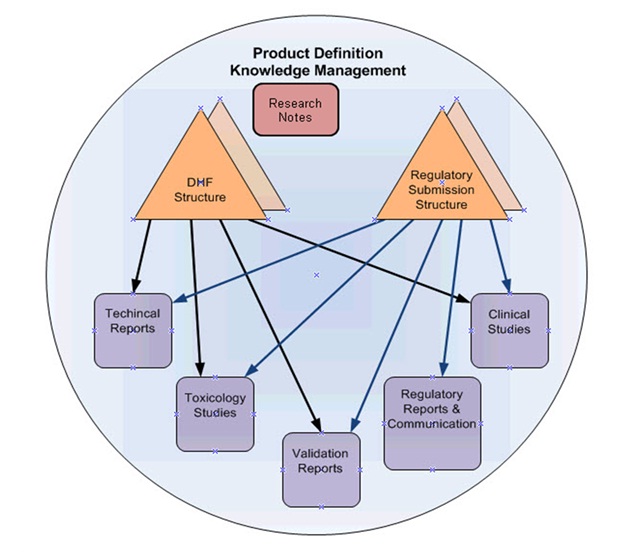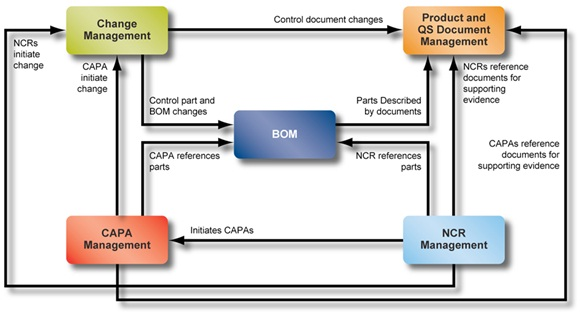Startup Businesses, How to Survive In Spite of Grim Odds
Tags: PLM, PLM Consulting, PLM Results, plm solution, PLM system, PLM Strategy
Four Ways Product Lifecycle Management Can Benefit Your Business
No product was dreamed up and launched in the same week. In fact, very few products are conceptualized and released even within the same year. It requires a lot of foresight to be able to examine every possible angle of a product before you make it available for customers to begin using, and all that scrutiny takes time -- which can end up costing your company money. But that's why product lifecycle management was put in place, to help you work more efficiently as you head toward your big new launch.
Cutting down on time
When you're running a business -- as the old adage goes -- time is money. Product lifecycle management systems allow you to expedite your researching phase, which cuts down the time it takes for the entire process of launching a product. In other words, a PLM system can record plenty of data, then organize it to reduce the time it takes to develop, and finally release, a product to the public. That means the entire process is covered, from the development of the initial concept all the way through design and manufacturing and, finally, the product's use.
Keeping the customer in mind
So, how do PLM companies organize these systems to keep the user at the forefront of the focus? Think of it this way: a user's relationship with any product has become very much an exact science. What PLM systems have allowed businesses to do is keep the user's best interests in mind -- before they spend large sums of money developing and implementing a new product. In short, they significantly speed up the process to help a company quickly develop the best products it can.
Protecting the potential user
Imagine sketching out an idea for a new product on a cocktail napkin, then creating it the very next day. You wouldn't simply put it out on the market the day after that, because you wouldn't know its potential problems, or if there are user liabilities to consider. Any new product demands a bit of rigorous testing in order to ensure users can't be harmed accidentally by using it. This is another important way PLM systems have been helping out businesses.
Tracking your progress
It's not just the product launch you have to worry about. There's a lot of money being spent on these items for them not to be financially worth it in the long run, so PLM systems can also help you keep tabs on product costs, sales history and any other numbers that play a key role in generating sales and revenue. If it's not going to be worth it, then why bother investing your time or money? PLM systems can help you determine if you're making a move that's both logically and financially smart.
Tags: PLM system
In PLM System Comparison, What Are the Important Points?
According to recent statistics from AboutPLM.com, the PLM, or product lifecycle management, consulting services industry has exploded within the last decade. In a one-year period, industry worth jumped from $24 billion to $27 billion. In 2013, the PLM solutions industry is expected to see 7.5% growth, further cementing the sector as a key player in developing businesses for success.
Tags: PLM system
Did you take advantage of the free downloads offered from Integware during 2012? If not, we have collected all of the best for your quick and convenient consumption. Take advantage of these while they are still available and be sure to stay subscribed for many 2013 downloads to come!
Tags: PLM, PLM Governance, Quality Management System, QMS, PLM system
PLM: The Nervous System of a Company
PLM is not a new concept. It has expanded well beyond the industries where it started. A question that we at Integware continue to hear from most companies, and in particular the visionaries within companies new to product lifecycle management, is “how do I show the business value of product lifecycle management?”
Tags: PLM, PLM ROI, PLM Investment, Life Sciences, PLM implementation, product lifecycle management, QMS, PLM system, PLM business value, PLM justification
I’ve had the opportunity to manage a large number of projects over the years from very large to very small and I have often found that the main challenges related to successful enterprise solution delivery are usually not technical. Yes technical obstacles will exist, will need to be overcome and engineering tradeoffs made. But in my experience the major roadblocks to enterprise implementations stem from improper governance, issues related to management of change (by that I mean organizational acceptance and understanding of value) and strategic investment shifts.
Tags: PLM, Integware, Life Sciences PLM, PLM Governance, Life Sciences, PLM implementation, Change Control, PLM system
This posting describes an approach to PLM implementations when an OOTB approach is not feasible and following this process leads to the characteristics a first rate PLM implementation. The engagement should be run in an agile manner with frequent deliverables that can be signed-off. The deliverables start as light-weight easily refined components of a Paper Prototype (PP) and evolve with feedback to a Demo Prototype (DP) and finally to a Conference Room Pilot Prototype (CRP) that shows the total solution. Each prototype is signed off by the business users. The purpose of the prototype refinement is to gradually transition the user from a paper-based world into an understanding of a PLM-based solution.
Tags: PLM implementation engagement process, demo prototype, CRP, paper-based, plm platform, PLM, Regulatory Submission, plm solution, PLM implementation, PLM system, DHF, clinical studies, Paper prototype, Conference room prototype, ISO 10746-1
Now that spring is here and summer is on the horizon and if you are like me you want to look your best for summer. What does that mean? Usually a diet of some sort, but what do you look for when starting a diet and how am I going to apply that to PLM?
Tags: PLM, Integware, Complaint Management, PLM implementation, PLM system, PLM deployment, iC5 Turbo
Product Definition Knowledge Management (PDKM) is a solution architecture approach that guides the use of PLM in supporting the full lifecycle of a product. The purpose is to have all the relevant product information in one place, connected to meet business needs, and safe. In other words, PDKM is a single source of the truth. The PDKM solution covers the product definition scientific and engineering information from the earliest research through all the improvements made to the product and its manufacturing process until the end-of-life.
Tags: 510(k), PDKM, NDA, PLM, Product Development, design history file, Product Definition Knowlege Management, plm solution, PLM system, DHF, clinical studies, Product lifecycle, 21 CFR 820.30
Build a better BOM using PLM and what not to say in an airport
During a recent business trip, I was sitting in an airport café with some colleagues while discussing how to build and manage BOMs. We got some strange looks. Then I mentioned something about exploding the BOM. More strange looks. Nervous glances. Finally, we decided it was best to avoid using the B word in airports. But since you probably know a thing or two about BOMs and PLM (otherwise, uh, why are you reading this?), I'll assume you know what I'm talking about and I can use my normal Nerd-speak of PLM acronyms. (My nickname around the office is "Big Nerd", because I'm six foot four and I think BOMs are interesting).
Tags: NCR, PLM, BOM Management, design history file, Change management, CAPA, DMR Management, PLM system, BOM, DHF, Document Management, DMR









